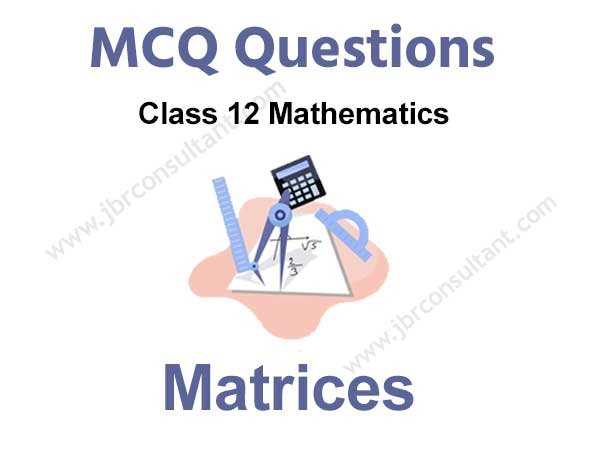Mineral and Energy Resources Class 12 MCQ is one of the best strategies to prepare for the CBSE Class 12 Board exam. If you want to complete a grasp concept or work on one’s score, there is no method except constant practice. Students can improve their speed and accuracy by doing more MCQ on Mineral and Energy Resources Class 12, which will help them all through their board test.
Mineral and Energy Resources Class 12 MCQ Question with Answer
Class 12 Geography MCQ with answers are given here to chapter 7 Mineral and Energy Resources. These MCQs are based on the latest CBSE board syllabus and relate to the latest Class 12 Geography syllabus. By Solving these Class 12 MCQs, you will be able to analyze all of the concepts quickly in the chapter and get ready for the Class 12 Annual exam.
Learn Mineral and Energy Resources Class 12 MCQ with answers pdf free download according to the latest CBSE and NCERT syllabus. Students should prepare for the examination by solving CBSE Class 12 Mineral and Energy Resources MCQ with answers given below.
Question 1. Singareni mines belong to which mineral?
a. Iron
b. Petrol
c. Copper
d. Coal
Answer
D
Question 2. Which is the best quality of iron ore?
a. Hematite
b. Siderite
c. Magnetite
d. Limonite
Answer
C
Question 3. Which one of these is not a renewable energy resource?
a. Wind energy
b. Geothermal Energy
c. Solar Energy
d. Natural Gas
Answer
D
Question 4. What is full form of HVJ?
a. Hajira-Virganj-Jagdishpur
b. Hajira-Vijaypur-Jagdishpur
c. Hajira-Vijaypur-Jamnagar
d. Haldia-Vishakhapatnam-Jodhpur
Answer
B
Question 5. Bhabha Atomic Research Centre is situated in?
a. Mathura
b. Bengaluru
c. Tarapur
d. Kota
Answer
C
Question 6. Bhilai steel plant was established in collaboration with which of the following nations?
a. Russia (USSR)
b. Germany
c. United Kingdom
d. USA
Answer
A
Question 7. Which of the following minerals is known as brown diamond?
a. Mica
b. Iron
c. Manganese
d. Lignite
Answer
D
Question 8. Ankleshwar oilfield is situated in?
a. Gujarat
b. Assam
c. Coastal Andhra
d. Maharashtra
Answer
A
Question 9. Which is the hardest mineral?
a. Diamond
b. Granite
c. Basalt
d. Gabbro
Answer
A
Question 10. Which mineral is also known as ‘liquid gold’?
a. Water
b. Petroleum
c. Coal
d. Mercury
Answer
B
Question 11. Manikaran (Himachal Pradesh) is popular for production of
a. Solar Energy
b. Wind Energy
c. Geothermal Energy
d. Tidal Energy
Answer
C
Question 12. Which one of these is not a renewable energy resource?
a. Wind energy
b. Geothermal Energy
c. Solar Energy
d. Natural Gas
Answer
D
Question 13. For which mineral, is Hazaribagh Plateau famous?
a. Iron ore
b. Copper
c. Mica
d. Coal
Answer
C
Question 14. Which of the following is a non- conventional source of energy?
a. Natural Gas
b. Petroleum
c. Coal
d. Wind
Answer
D
Question 15. Which of the following is not a ferrous mineral?
a. Iron
b. Manganese
c. Chromite
d. Zinc
Answer
D
Question 16. When was the Gas Authority of India Limited set up?
a. 1983
b. 1984
c. 1985
d. 1986
Answer
B
Question 17. Which of the following is the leading producer of manganese in India?
a. Odisha
b. Andhra Pradesh
c. Jharkhand
d. Rajasthan
Answer
A
Question 18. Which out of the following states has major oil fields?
a. Assam
b. Bihar
c. Rajasthan
d. Tamil Nadu
Answer
A
Question 19. Which fossil fuel is called liquid gold?
a. Petroleum
b. Coal
c. Natural Gas
d. All of these
Answer
A
Question 20. Lignite coal is found in:
a. Jharia
b. Neyveli
(Q Bokaro
d. Raniganj
Answer
B
Question 21. Which of the following is non-metallic mineral?
a. Copper
b. Gold
c. Silver
d. Limestone
Answer
D
Question 22. Which of the following is an ore of aluminium?
a. Iron
b. Copper
c. Bauxite
d. Mica
Answer
C
Question 23. Which of the following minerals is known as brown diamond?
a. Mica
b. Iron
c. Manganese
d. Lignite
Answer
D
Question 24. When was the Atomic Energy Commission established?
a. 1947
b. 1948
c. 1950
d. 1952
Answer
B
Question 25. Where is the largest solar plant located?
a. Nasik
b. Madhopur
c. Kaiga
d. Chandrapur
Answer
B
Whoever needs to take the CBSE Class 12 Board Exam should look at this MCQ. To the Students who will show up in CBSE Class 12 Geography Board Exams, It is suggested to practice more and more questions. Aside from the sample paper you more likely had solved. These Mineral and Energy Resources Class 12 MCQ are ready by the subject specialists themselves.
Question 26. Name the process in which deep wells are bored to take out petroleum and natural gas.
a. Quarrying
b. Drilling
c. Shaft mining
d. Opencast mining
Answer
D
Question 27. Which is the non-renewable source of energy?
a. Hydel
b. Solar
c. Thermal
d. Wind
Answer
C
Question 28. Which one of the following minerals is known as black diamond?
a. coal
b. Lignite
c. Manganese
d. Mica
Answer
A
Question 29. Which of the following are ferrous mineral?
a. iron
b. Magnese
c. Both A and B
d. none of the above
Answer
C
Question 30. In which of the following place is copper found?
a. Hazaribagh
b. khetri
c. Balaghat
d. all of the above
Answer
D
Question 31. Which of the following is types of iron ore?
a. hematite
b. magnetite
c. Both A and B
d. none of the above
Answer
C
Question 32. Which of the following is the leading producer of manganese in India?
a. Mumbai
b. Odisa
c. Rajasthan
d. Madhya Pradesh
Answer
B
Question 33. Which one of the following is a famous Copper mine?
a. Bastar
b. Khetri
c. Nellore
d. Jharia
Answer
B
Question 34. Gold is an example of mineral.
a. ferrous
b. non-ferrous
c. both a. and b.
d. none of these
Answer
B
Question 35. Which of the following is coal mine sites?
a. Bokaro
b. Raniganj
c. jharia
d. all of the above
Answer
D
Question 36. Which was the first oil refinery setup in India?
a. Dibgoi refinery
b. Panipat refinery
c. Jamnagar refinery
d. Haldia refinery
Answer
A
Question 37. Which one of the following is a ferrous mineral?
a. Bauxite
b. Iron ore
c. Mica
d. Coal
Answer
B
Question 38. Crude petroleum is found in which type of rock?
a. igneous rocks
b. metamorphic rocks
c. sedimentary rocks
d. none of the above
Answer
C
Question 39. Why has quarrying become a major environmental concern?
a. Because minerals are pollutants
b. Due to dust raised from the quarrying activities
c. Because it is done by displacing people
d. None of these
Answer
B
Question 40. Which the following is conventional sources of energy?
a. geothermal energy
b. wind energy
c. coal energy
d. solar energy
Answer
C
Question 41. Where is the largest solar plant located?
a. Nasik
b. Madhopur
c. Kaiga
d. Chandrapur
Answer
B
Question 42. Give an example of shafts.
a. Surface mining
b. Deep bores
c. Off-shore drilling
d. None of these
Answer
B
Question 43. The process of taking out minerals from rocks buried under the surface of the earth is named as
a. mining
b. pumping
c. extracting
d. none of these
Answer
A
Question 44. Give two examples of non-metallic mineral fuels from the options given below:
a. Manganese Ore, Bauxite
b. Gold, Silver
c. Coal, Petroleum
d. Iron Ore, Bauxite
Answer
C
Question 45. Which of the following non-metallic minerals is used in the electrical and electronic industries?
a. Bauxite
b. Copper
c. Mica
d. Manganese
Answer
C
Question 46. What is the process in which minerals lying near the surface are dug?
a. Drilling
b. Off-shore drilling
c. Quarrying
d. Extraction
Answer
C
Question 47. The iron content in Hematite is:
a. 20 – 30%
b. 30 – 40%
c. 40 – 50%
d. 60 – 70%
Answer
D
Question 48. Minerals can be identified on the basis of their physical properties. Which one among the following is not a physical property
with respect to the minerals?
a. Colour
b. Presence of Sulphides
c. Hardness
d. Density
Answer
B
Question 49. Which one of the following best describes a Metal
a. A substance without any definite shape
b. Substances without any physical properties
c. Hard substances that conduct heat and electricity and have a characteristic lustre or shine.
d. Substances without chemical composition
Answer
C
Question 50. Bhabha Atomic Research Centre is situated in?
a. Mathura
b. Bengaluru
c. Tarapur
d. Kota
Answer
C
Question 51. Where is the largest coalfield of India?
a. Jharia
b. Raniganj
c. Neyveli
d. Singareni
Answer
A

You can easily get good marks If you study with the help of Class 12 Mineral and Energy Resources MCQ. We trust that information provided is useful for you. NCERT MCQ Questions for Class 12 Geography PDF Free Download would without a doubt create positive results.
We hope the information shared above in regards to MCQ on Mineral and Energy Resources Class 12 with Answers has been helpful to you. if you have any questions regarding CBSE Class 12 Geography MCQ Pdf, write a comment below and we will get back to you as soon as possible.
Frequently Asked Question (FAQs)
How many MCQ questions are there in Class 12 Geography Chapter 7?
In Class 12 Chapter 7 Geography, we have provided 51 Important MCQ Questions, But in the future, we will add more MCQs so that you can get good marks in the Class 12 exam.
Can we score good marks in Class 12 Geography with the help of Mineral and Energy Resources MCQ Questions?
Yes, MCQ Question is one of the best strategies to make your preparation better for the CBSE Board Exam. It also helps to know the student’s basic understanding of each chapter. So, You can score good marks in the Class 12 Geography exam.


